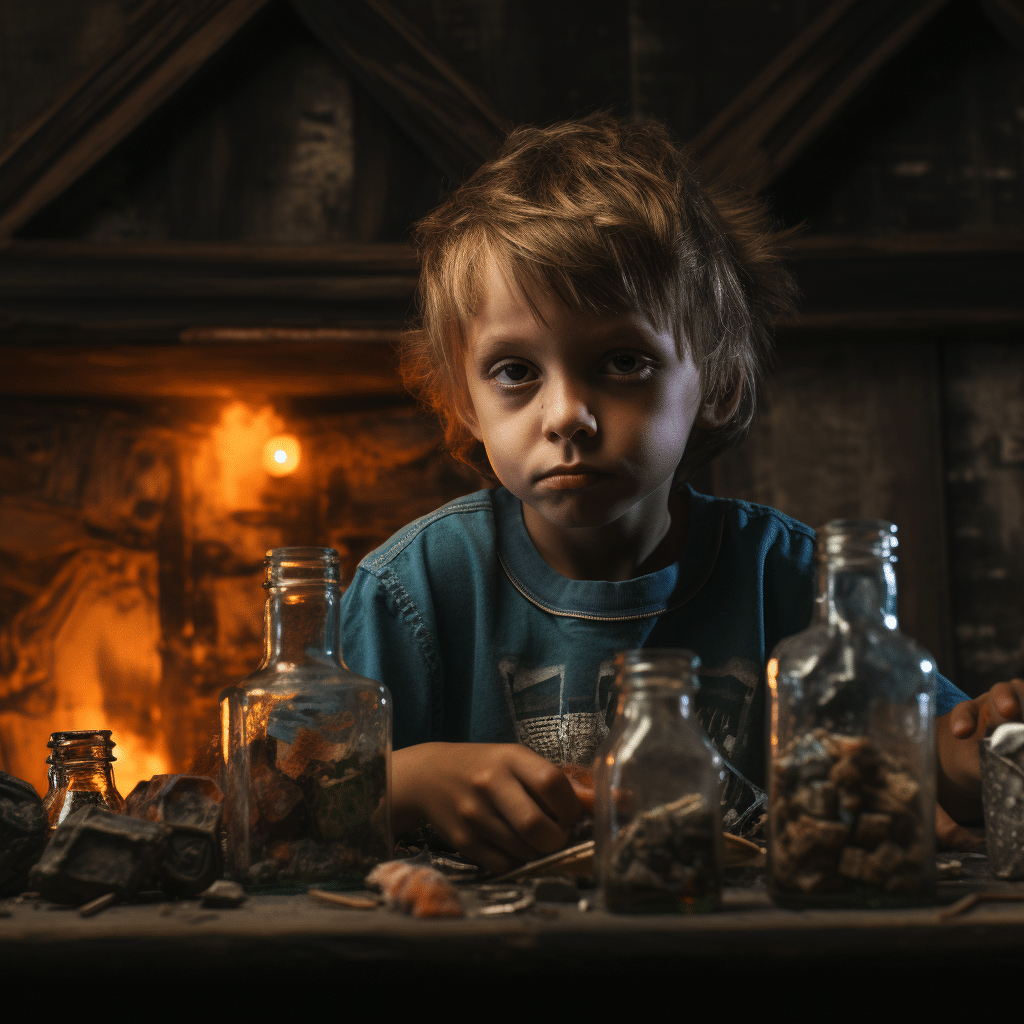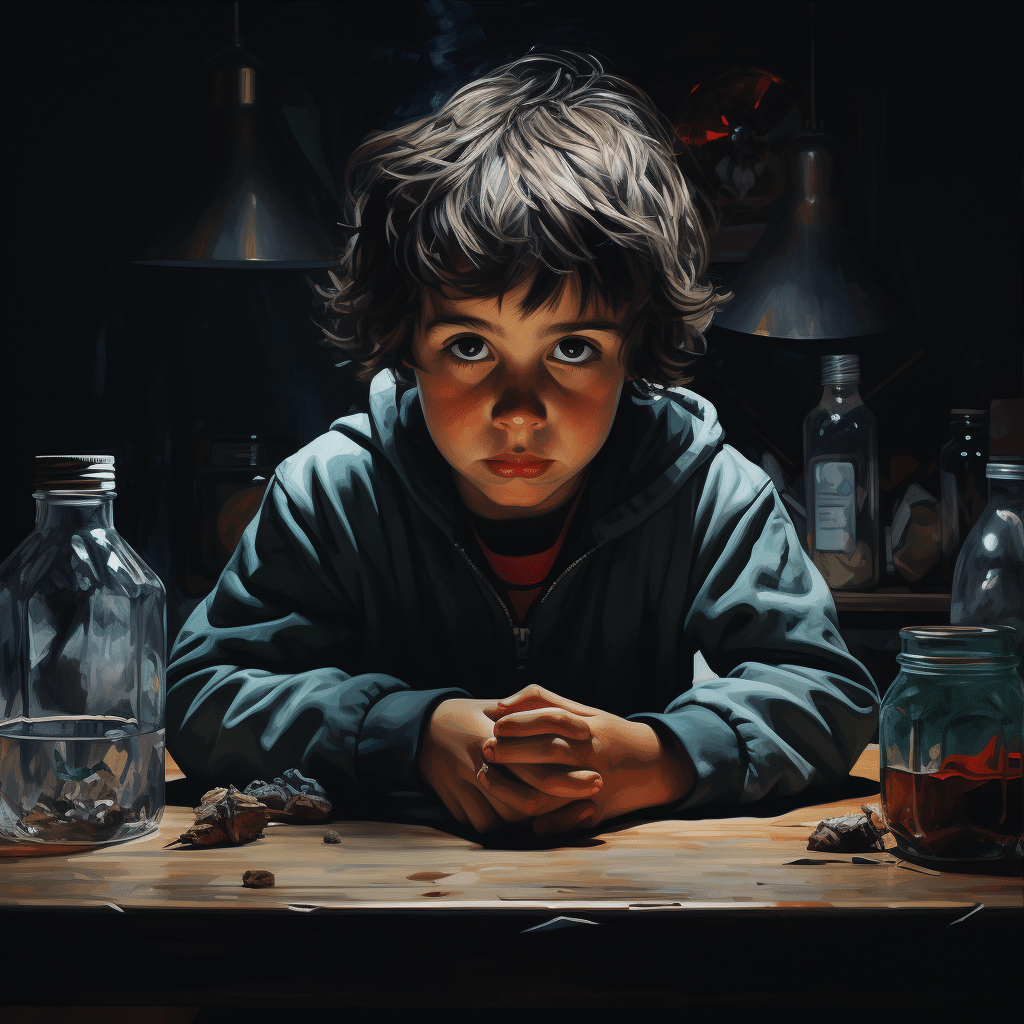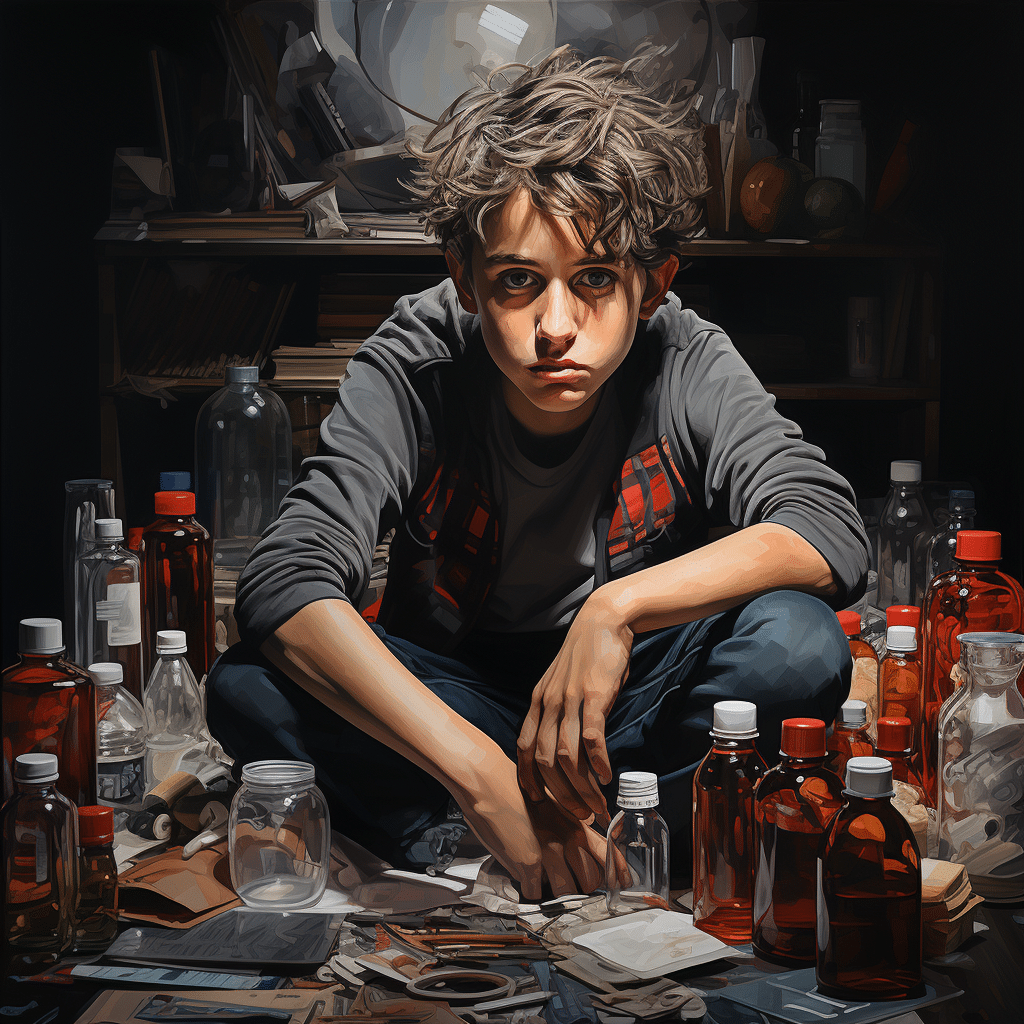The moment you realize that your child, whom you’ve nurtured through infancy, guided through adolescence, and admired in young adulthood, is caught in the relentless grip of addiction, your world shatters into a mosaic of heartache and confusion. Acknowledging that my son is an addict isn’t just a sentence—it’s a seismic shift in the story of a family.
The Heartbreaking Discovery That My Addicted Son Needs Help
The journey to understanding began with whispers of concern that breezed through our family conversations. Something was off—my son’s eyes had lost their curiosity, his laughter came less frequently, and his presence in our lives grew sporadic and shadowed. Like any mother’s intuition, I sensed the turbulence beneath his silence. My concern escalated when I found drug paraphernalia in his room—a sure-fire sign that my son is a drug addict.
In talks with counselors and deep-dives into expert literature, I learned addiction’s complex reality. Often mistaken as a weakness or a moral failing, well-supported scientific evidence shows that it’s a chronic brain disease, potentially recurrent yet subject to recovery, with a cycle of binge/intoxication, withdrawal/negative affect, and preoccupation/anticipation stages. It’s a condition in which genes account for about half of one’s risk—meaning my addicted son is not solely at fault for his plight.

Stigma and Silence: Breaking Through the Barriers When My Son’s an Addict
Where does a mother turn when her son’s an addict? Unfortunately, society still flinches at the word. I’ve felt the quiet exit of friends, the hushed tones of relatives who meant well but equated addiction with disgrace. A dialogue with other parents in similar situations revealed a collective wound—we were all wandering through a sort of societal exile.
But silence is the last thing we need. Spearheaded by the courage of folks at Mothers Against addiction, I’ve learned that breaking the stigma starts with conversation. They underline the value in sharing our stories, dispelling myths, and, most importantly, never letting shame silence our struggle for hope.
| Factor | Description | Additional Notes |
| Disease Nature | Chronic brain disease with potential for recurrence and recovery. | Addiction alters brain function and structure, affecting reward, motivation, and memory processes. |
| Genetic Influence | Approximately 50% of addiction risk is genetic. | Family history is a significant risk factor but not a sole determinant. |
| Cycle of Addiction | Binge/Intoxication, Withdrawal/Negative Affect, Preoccupation/Anticipation | Understanding this cycle can inform treatment approaches. |
| Signs of Addiction | Changes in behavior, financial problems, physical signs, isolation | Professional diagnosis required for confirmation and treatment planning. |
| Treatment Modalities | Behavioral therapy, medication, support groups, medical detox | Treatment should be personalized and may include a combination of methods. |
| Importance of Support | Family, friends, and community support are crucial for recovery. | Support networks can include family therapy or joining organizations like Al-Anon. |
| Relapse | Relapse is a common part of the recovery process. | It’s not a sign of failure but indicates a need for treatment adjustment. |
| Recovery | A long-term process with the possibility of a fulfilling life post-addiction. | Recovery includes continual commitment to personal growth and treatment. |
| Resources Available | Hotlines, treatment centers, support groups, therapy | Research and reach out to local and national resources. Assistance can vary by location. |
| Legal Considerations | Varies based on the nature of the addiction and any related offenses. | Seek legal counsel if there are any charges or legal matters involved. |
How My Drug Addict Son Changed Our Family Dynamics
The arrival of addiction in our household has been like an uninvited guest at dinner, upsetting the family balance and leaving us to rearrange the seating chart of our lives. Suddenly, I – a lawyer by day, a mother always – was navigating roles I never expected. My younger children had questions that lacked simple answers, and my husband found himself building an emotional fort, preparing for a siege we were all too familiar with in the stories of other families.
Experts cite that family therapy and communication are anchor points in this storm. Research suggests that while the family dynamic invariably changes, it can grow more robust through open dialogue, clearly established boundaries, and a collective commitment to healing.

Navigating Treatment Options for My Addicted Son
“What treatment options are available for my drug addicted son?” I found myself asking. The answers were as varied as they were complex. There are inpatient facilities that offer a structured environment, outpatient programs boasting flexibility, and even holistic practices that cater to individuals like my son on drugs, who might benefit from a more personalized approach.
Each option comes with its labyrinth of decisions—cost, insurance, efficacy. I came across a guide on Mothers Against addiction titled “Help my son Is on Drugs,” which became an invaluable resource in understanding the considerations and helping me answer the pleading question, “How can I help My drug addicted son ?“
The Role of Support Systems When My Son Is a Drug Addict
As resilient as we strive to be, parents of addicts can’t walk this path alone. Support systems—be they group therapy sessions, family counseling, or online forums—act like scaffolding around the fragile structure of our families. Real-life examples from drug addiction awareness programs depict that this network not only empowers the individual facing addiction but also fortifies the parents and siblings amidst their struggle.
Legal and Societal Challenges: When My Son Is an Addict
The nightmare gets thornier with potential legal quagmires. What if your son on drugs crosses paths with law enforcement? I found myself learning about juvenile justice, rehabilitation laws, and school policies, each with its own set of bureaucratic hurdles.
In this maze, advocates call out for reform, for understanding from the legal side to aid rather than punish those like my addicted son. Thought leaders from the Kenya Barris show are starting conversations about these real-life issues, reflecting on what accommodations could ease the struggles of families like mine.
Personal Introspection: Growing As a Parent to Support My Son on Drugs
This chapter of life demands introspection. I’ve trodden a path woven with resilience—discovering the meticulous balance between loving support and unintentional enabling. Self-care became a non-negotiable, not just a buzzword. The reflection often feels like looking into a lake stirred by a storm, realizing that the anchor of understanding resides not only in how we support our children but also in how we sustain ourselves.
From Despair to Hope: Success Stories of Recovery and Reconciliation
Yet, despite the gravity of my son’s battle with addiction, hope persists. It flourishes in the heartening tales of those who’ve walked through the valley of despair and arrived at hopeful summits. Parents Of adult Addicts‘ stories, shared through platforms such as Mothers Against Addiction, remind us that recovery is not a myth—it’s an attainable reality for many, including my drug addict son.
An Ongoing Journey: Embracing the Uncertainty of My Son’s Addiction Battle
As we look forward, embracing the uncertainty remains a beacon of progress. We understand that addiction is not a battle won overnight but a series of skirmishes against an often unseen enemy. For parents like us, the commitment is in recognizing each step forward, knowing that it’s part of a larger march towards recovery.
Adaptability is our newfound creed, and hope our armor in this ongoing journey where my son is an addict. We stand resilient, empowered by the strength within and the support around, reminding us that the narrative of addiction can always find its way to redemption.

What is the life cycle of an addict?
Well, the life cycle of an addict is, sadly, a bit of a roller coaster with twists and turns. It all kicks off with initial use, where they might just be experimenting. Then, if the shoe fits, comes increased use—we’re talkin’ more frequent, right? Hang on tight because next up is dependence; that’s when their body starts throwing a fit without the stuff. Following that, there’s full-blown addiction where everything else is thrown out the window for the substance. And lastly, if they’re lucky and the stars align, we’ve got treatment and recovery—but it’s a slippery slope, and they gotta watch each step.
What is an example of addict behavior?
Oh, boy, an example of addict behavior is like watching the same bad movie on repeat—it’s that sort of ‘here we go again’ moment. Think someone lying about how much they’re using, or sneaking around like a cat in the night to get their fix. They might even start borrowing cash with a million excuses, and next thing you know, stuff starts to vanish. You know the type – they’d sell their grandma’s heirlooms for a dime if it meant getting the monkey off their back.
What are the three main signs of addiction?
When it comes to the three main signs of addiction, it’s like trying to spot Waldo in a crowd. First up, you’ve got cravings hitting them like a freight train. Next, there’s loss of control—imagine trying to keep a lid on a pot that’s boilin’ over. And lastly, we’re looking at negative consequences. Y’know, when their life starts to crumble like a cookie, but they keep on using anyway.
Are addicts genetic?
Boy, are addicts genetic? That’s the million-dollar question. It’s like they might’ve won the worst kind of lottery—or not. There’s evidence that genetics can play a role, something like a family curse, handed down from generation to generation. It’s not all in the genes, but if your family tree’s got some bad apples, it might up the odds.
What are the 4 C’s of addiction?
The 4 C’s of addiction are like the world’s worst cook-off you can’t leave. First, you’ve got compulsion – it’s like they’ve got an itch they just can’t scratch enough. Then there’s craving, where they want their fix more than a kid wants candy. Next is consequence; despite life falling apart like a house of cards, they don’t stop. And last is control, or really, the lack thereof—it’s like they’ve got no reins on a runaway horse.
What are the 3 stages of relapse in order?
About the 3 stages of relapse, think of it as an unwanted guest popping over. First, there’s emotional relapse—no use yet, but their emotions are a ticking time bomb. Secondly, mental relapse; it’s that internal tug-of-war, part of ’em screaming for sobriety while the other’s whispering sweet nothings about using. And, the grand finale: physical relapse—it’s when they actually start using again and the whole house of cards tumbles.
What personality traits are associated with addiction?
Personality traits associated with addiction, huh? We’re looking at a party mix of risky traits—if personality were a color, these would be the loud ones. You’ve got your risk-takers, the impulsive types who jump first and think later. Then, those who feel about as good as a three-legged dog—low self-esteem is a biggie. Don’t forget the rebellious ones, always ready to stick it to the man. Oh, and stress magnets—it’s like they’re wearing a sign that says ‘bring it on’.
What do all addicts have in common?
What do all addicts have in common? Well, it’s not exactly a secret handshake, but one thing is for sure—they’ve all got a hunger that can’t be satisfied. They’re on a relentless quest to fill a void or quench some thirst that just won’t quit. It’s like they’re running on a never-ending treadmill, always chasing that feeling or escape, no finish line in sight.
What are the six major characteristics of addictive behavior?
The six major characteristics of addictive behavior? Now that’s a bit like naming the most infamous outlaws in the Wild West. You’ve got everything from a tolerance build up as high as a skyscraper, to withdrawal that hits ’em like a sack of bricks. There’s inability to cut back, ignoring the rubble of their life. Don’t overlook the time sucked away like a vacuum, or the giving up of activities once loved. And at the top of the charts: using despite knowing it’s as bad for them as a jump off a cliff without a parachute.
What gene is linked to addiction?
Ah, the gene linked to addiction is like finding a needle in a genetic haystack. Scientists have cast their eyes on the DRD2 gene, suspecting it’s the notorious ringleader in the addiction game. Seems this little piece of DNA could make someone more likely to fall into the addictive spiral like a fly into a spider’s web.
Are mental issues genetic?
Are mental issues genetic? Well, to some extent you bet your boots they are. Mind troubles can be passed down like a dubious family heirloom. Though it’s not just about the cards you’re dealt, it’s kinda like nature and nurture having a dance-off. Your genes set the playlist, but life’s tunes play a part. Just ’cause it’s in your genes doesn’t mean it’s your destiny—sometimes the apple does fall far from the tree.
What are the five stages of recovery?
So, what about the five stages of recovery? Picture this as the ultimate obstacle course. First up, there’s the “I think I might have a problem” early stage; a real throat-clearer. Next, they consider recovery; it’s the “hmm, maybe I should do something” phase. Then, we’ve got the action track, where they roll up their sleeves and get to work. The fourth is the maintenance stage—they’ve gotta keep on truckin’ to stay on the straight and narrow. And if the stars align, they reach the final stage: transcendence—when they’ve not only climbed the mountain but set up camp at the top.
What are the 4 stages of the cycle of addiction?
Talking about the 4 stages of the cycle of addiction, think of a broken record endlessly spinning. Pre-contemplation kicks it off, they’re using but clueless about the chaos. Then contemplation, where their wheels are turning, and they’re thinking, “Maybe I’ve got a problem.” Preparation is the next tune, getting their ducks in a row to make a change. And finally, the action stage, stepping out onto the stage to kick the habit. But beware of the skip that might loop them right back.
What are the 5 elements of addiction?
Lastly, we’ve got the 5 elements of addiction. It’s like a buffet of bad news; first, there’s chronic, it drags on longer than a bad movie. Next is the relapse factor, ready to pop up like a jack-in-the-box. Then we’ve got the biological element—bodies reacting to substances like cats to catnip. Social problems strut in next, enough drama to make a soap opera blush. And don’t forget the spiritual emptiness, like a black hole pulling at their soul.




























